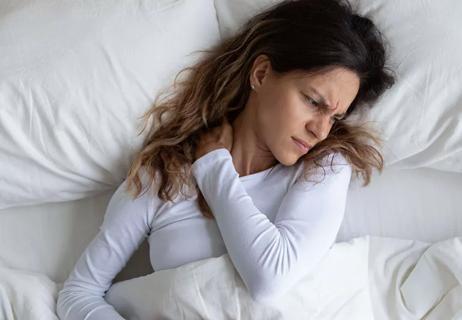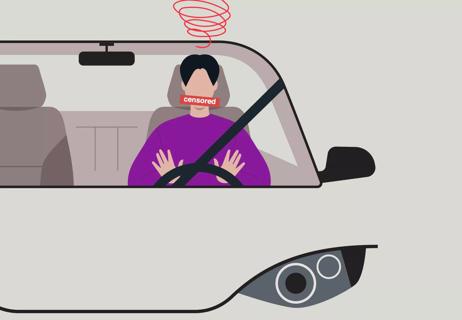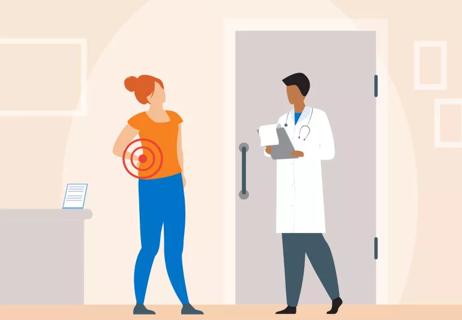Know when it's time to seek help with your injury or technique

Athletes, fitness buffs and novices alike all know the saying, “No pain, no gain.” To some extent, this saying is true.
Advertisement
Cleveland Clinic is a non-profit academic medical center. Advertising on our site helps support our mission. We do not endorse non-Cleveland Clinic products or services. Policy
Weight-bearing and cardiovascular activities stress the body. As a result of that stress, we enhance our strength and endurance. By pushing our physical boundaries, we optimize our athletic performance. But this process is almost always at the cost of feeling some level of pain.
And that leads to questions pondered at times by weekend warriors, bodybuilders and recreational athletes alike: “Should I push through the pain? And is there such a thing as ‘good pain’?”
Sports medicine physician Dominic King, DO, has an answer that helps cut through abundant and often-conflicting advice: “A certain low level of soreness is acceptable, but you should not push through pain while exercising.”
There will be times when the pain is bad and persistent enough to warrant not just giving the exercise a rest but also paying a visit to your doctor.
Good pain, believe it or not, does exist. When you have pain that is a feeling of soreness or achiness, it’s usually the result of mild inflammation or microtears in your muscles or tendons, Dr. King says. Extensive exercise can also cause a build-up of lactic acid in the muscles.
The muscle repairs these tears when you’re resting, and this helps muscles grow in size and strength. This microtrauma may sound harmful, but it is your body’s natural response when your muscles experience work.
Advertisement
This kind of acceptable pain might occur when you start a new exercise or go back to an exercise you haven’t done in a while. You feel some achiness that lasts for a few days. This kind of soreness diminishes after you rest.
Another common form of exercise-induced muscle soreness can develop when you perform an unfamiliar physical activity for an extended time without a gradual ramp-up. This is called delayed onset muscle soreness, or DOMS. It develops a couple of days after intense exercise.
DOMS also can happen after exercise in which you are contracting your muscles at the same time you are lengthening them, says orthopedic surgeon Mark S. Schickendantz, MD. This can happen, for example, if you run downhill, resulting, again, in those microtears in muscles.
Unfortunately, no treatment yet has been shown to actually reduce the length of time that muscles remain sore and weak. Ibuprofen or alternating hot and cold packs may help to ease the pain temporarily, Dr. Schickendantz says.
The good news is that the soreness typically goes away in a few days on its own. Whether or not you should work through this type of pain is a tricky answer. If you’re only experiencing low-level soreness, Dr. King says, it’s probably okay to do a lighter workout. Some physical activity might even help to ease the achiness.
“There is, however, a very fine line between gaining results through building muscle and causing damage,” Dr. King says. If your DOMS is a bit more painful, it’s best to avoid strenuous exercise until you are no longer sore.
But strong, sharp or persistent pain that develops while you are exercising is a different matter.
“Pain represents injury,” Dr. King says. “It occurs as a result of overuse or too much stress placed on a muscle or a tendon. It can be the result of repetitive use or a single episode of overloading a muscle or tendon. That’s muscle strain.”
Pain during physical activity is a signal that you are putting too much strain on a muscle or tendon and should stop, Dr. King says.
“People used to say you need to ‘suck it up,’ or just push through the pain. They’d say you need to keep going to get results. But pain is your body trying to tell you something, and you have to listen,” Dr. King says.
It’s also important to make sure the pain and tightness you’re experiencing is not associated with something more serious, Dr. Schickendantz says.
Symptoms of possible structural injury that merit consultation with a physician include:
Advertisement
The cornerstone of treating muscle soreness is rest, but it’s also important to move and maintain your range of motion as much as possible.
Applying ice and heat definitely can help, as can judicious use of anti-inflammatory medicines.
“However,” Dr. King says, “inflammation is your body’s way of healing injuries. So you may not want to halt that inflammation entirely. If you have to ice often or take medications frequently, this may indicate an unacceptable type of soreness that should be evaluated by a physician.”
If soreness or pain is significantly affecting your daily activities, causing noticeable weakness, persists for several weeks to a month or continues when you are resting or interrupts sleep, it is time to see a doctor, Dr. King says.
Stretching before and after exercise and staying well-hydrated can help you avoid muscle strain. But the absolute best way to avoid reaching the stage of unacceptable pain — as well as to prevent the onset of DOMS — is to start low and go slow, Dr. King says.
That means you start at a very low intensity and duration and slowly ramp up your time and effort to build endurance.
“If your daily job and daily activities do not involve flipping tires and grabbing large ropes, then that is probably not how you should start out with an exercise program,” Dr. King says. “Instead, give yourself plenty of time to reach your fitness goals.”
Advertisement
The start-low-and-go-slow approach goes for cardiovascular exercise and weight training, and every type of exercise in between.
And be sure you’re always using the proper technique for any exercise, says Jamie Starkey, LAc. “Recurring pain connected with sports often is due to incorrect form or technique. If you can catch these errors early, you can retrain yourself so that you avoid re-injury or chronic recurrences.”
Advertisement
Learn more about our editorial process.
Advertisement

Finding a neutral position can ease stress on your back, neck and shoulders

Foul language may be beneficial, but it won’t make you smarter

Five minutes of quiet, focused time can help

Good pain or bad? Know the different kinds and when to seek help

Tips to help your pain management specialist help you

Understanding your alternatives

Arthritis, migraines and endometriosis are common causes of chronic pain

Not all signals of physical pain actually make it to our brains — and you have some power over it

Type 2 diabetes isn’t inevitable with these dietary changes

Applying a hot or cold compress can help with pain